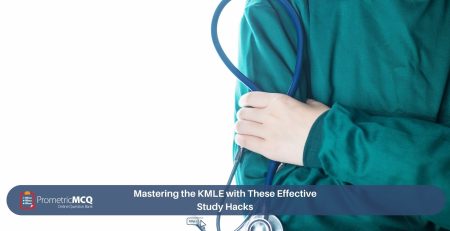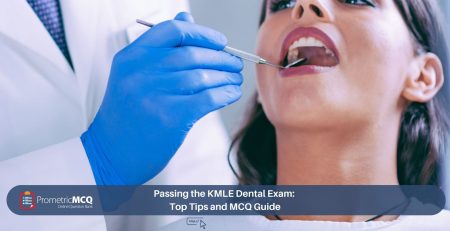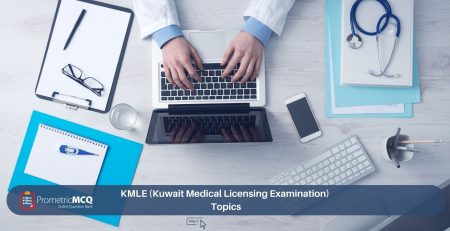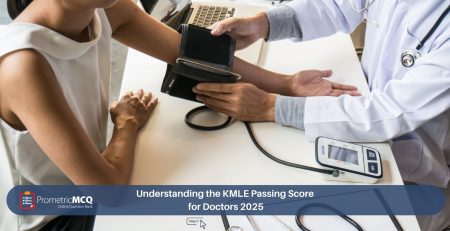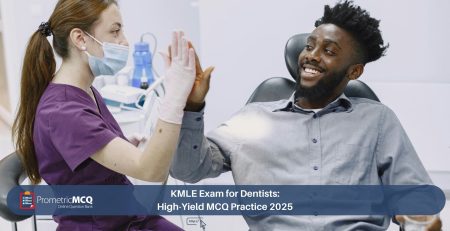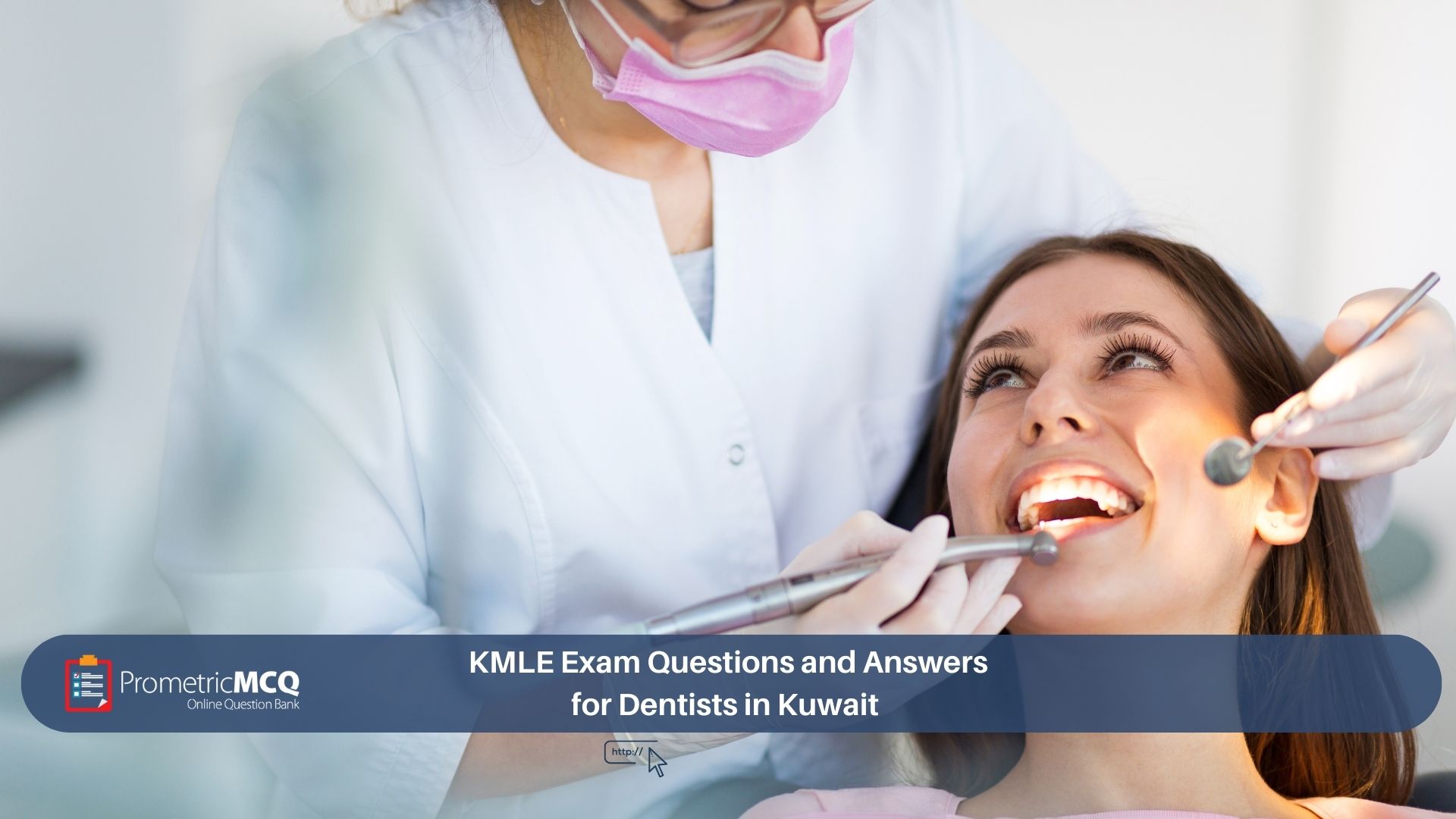
KMLE Exam Questions and Answers for Dentists in Kuwait
fatima@prometricmcq.com2025-09-19T21:26:15+00:00Table of Contents
ToggleKMLE Exam Questions and Answers for Dentists in Kuwait (2025)
For dentists worldwide, Kuwait represents a premier destination for professional growth, offering a technologically advanced healthcare infrastructure and a diverse patient base. The key to unlocking this career opportunity is the Kuwait Medical Licensing Examination (KMLE) for Dentists. This is a formidable Prometric-administered exam that serves as the quality benchmark, ensuring that every practicing dentist in the country possesses a high degree of clinical competence, diagnostic acumen, and a firm grasp of evidence-based treatment protocols.
The KMLE for Dentists is not a test of rote memorization. It is a sophisticated, case-based examination designed to challenge your clinical reasoning skills. The Multiple-Choice Questions (MCQs) are crafted to simulate real-world dental practice, requiring you to analyze patient scenarios, interpret radiographs, formulate treatment plans, and make critical decisions under pressure. The most effective way to prepare for this style of examination is to immerse yourself in high-quality, exam-style questions and deeply analyze their answers and rationales.
This ultimate 2025 guide has been created to be your definitive resource for KMLE dental exam preparation. We will provide a comprehensive collection of free sample questions and answers, each with an exhaustive rationale that illuminates the clinical thinking behind the correct choice. We will also break down the high-yield topics, offer strategic study advice, and conclude with a robust 10-point FAQ section to address all your pressing concerns. This guide is your first and most important step towards mastering the content and succeeding on exam day.
Key Takeaways for the KMLE Dental Exam
- Diagnosis is King: The exam heavily tests your ability to make an accurate diagnosis based on clinical signs, symptoms, and radiographic findings.
- Master Treatment Planning: Beyond diagnosis, you must be able to formulate logical, evidence-based treatment plans for a wide range of dental conditions.
- Radiographic Interpretation is Crucial: Proficiency in interpreting periapical, bitewing, and panoramic (OPG) radiographs is non-negotiable.
- Know Your Materials: A deep understanding of dental materials—their properties, indications, and contraindications—is frequently tested.
- Active Learning with MCQs: The most effective study method is consistently solving case-based questions from a high-quality question bank.
Core Domains of the KMLE Dental Exam Syllabus
To study effectively, you must understand the exam’s blueprint. The KMLE for Dentists is a comprehensive assessment covering all major areas of general dentistry. A smart preparation strategy involves allocating your time based on the importance of these domains. This approach is a cornerstone of our general KMLE exam guide.
| Dental Domain | High-Yield Topics and Key Concepts for 2025 |
|---|---|
| Operative & Restorative Dentistry | Principles of cavity preparation (G.V. Black), caries diagnosis (including ICDAS), properties and manipulation of dental materials (amalgam, composite resins, glass ionomers), adhesive dentistry, pulp capping procedures, and management of non-carious tooth surface loss. |
| Endodontics | Diagnosis of pulpal and periapical pathology, root canal anatomy, principles of access cavity preparation, cleaning and shaping, obturation techniques, management of endodontic emergencies (e.g., abscess), and treatment of traumatic dental injuries. |
| Prosthodontics (Fixed & Removable) | Principles of tooth preparation for crowns and bridges, impression materials and techniques, complete and removable partial denture design and fabrication, occlusion, and fundamentals of implant dentistry. |
| Oral Surgery & Anesthesia | Techniques for routine and surgical extractions, management of impacted teeth (especially third molars), pharmacology and administration of local anesthetics, management of post-operative complications, and recognition of common oral lesions requiring biopsy. |
| Periodontics | Classification and diagnosis of periodontal and gingival diseases, non-surgical periodontal therapy (scaling and root planing), principles of periodontal surgery, and understanding the systemic links to periodontal disease. |
| Pediatric Dentistry (Pedodontics) | Behavior management techniques, management of dental caries in the primary dentition, pulp therapy for primary teeth (pulpotomy), space maintainers, and preventive strategies like sealants and fluoride application. |
| Orthodontics | Angle’s classification of malocclusion, identification of skeletal vs. dental discrepancies, cephalometric basics, and recognizing the need for specialist referral. You are not expected to be an orthodontist, but you must be able to diagnose common issues. |
| Oral Pathology, Medicine & Radiology | Radiographic interpretation of common pathologies (cysts, tumors, periapical lesions). Diagnosis and management of common oral mucosal diseases (aphthous ulcers, lichen planus, candidiasis). Oral manifestations of systemic diseases. |
Free KMLE Dental Exam: Sample Questions and In-Depth Answers
The best way to prepare is to dive into realistic, case-based questions. Analyze each scenario carefully before looking at the options. This process is the most effective way to build your clinical reasoning skills. For a more exhaustive set of questions, a dedicated QBank of Dentistry MCQs is the ideal tool.
Question 1: Endodontics
A 35-year-old patient presents with a severe, spontaneous, throbbing pain in the lower right first molar that has been waking him up at night. The pain is exacerbated by hot stimuli and is momentarily relieved by cold water. A percussion test is negative. What is the most likely pulpal diagnosis?
- Reversible Pulpitis
- Symptomatic Irreversible Pulpitis
- Pulpal Necrosis
- Normal Pulp
Correct Answer: B (Symptomatic Irreversible Pulpitis)
Rationale: This is a classic presentation of symptomatic irreversible pulpitis. The key features are the spontaneous, severe, and often radiating pain that disturbs sleep. The exacerbation by heat and, crucially, the relief with cold are pathognomonic signs. This indicates that the pulp is severely inflamed beyond its capacity to heal, requiring root canal therapy.
Why other options are incorrect:
A: Reversible pulpitis is characterized by sharp pain that is only provoked by a stimulus (like cold or sweet) and subsides immediately upon its removal. It does not involve spontaneous pain.
C: Pulpal necrosis means the pulp is dead. It would not respond to thermal stimuli (hot or cold) and is often associated with a positive percussion test, indicating inflammation has reached the periapical tissues.
D: A normal pulp would have a mild, transient response to stimuli and would be free of spontaneous pain.
Question 2: Oral Surgery
During the extraction of a maxillary first molar, you notice a small opening into the maxillary sinus (oroantral communication) of about 1-2 mm in diameter. The patient is healthy with no history of sinus problems. What is the most appropriate immediate management?
- Immediately refer the patient to an oral surgeon.
- Place a buccal advancement flap to surgically close the defect.
- Advise the patient of the finding, provide sinus precautions, and allow for spontaneous closure.
- Pack the socket with Gelfoam and prescribe broad-spectrum antibiotics for 10 days.
Correct Answer: C
Rationale: For a small oroantral communication (<2 mm) in a healthy patient, the standard of care is conservative management. The primary goal is to ensure a stable blood clot forms and is maintained in the socket. This is achieved by providing clear “sinus precautions” (no nose blowing, sneezing with the mouth open, no smoking, no using straws) and allowing the small defect to heal on its own. Surgical intervention is not indicated for such a small opening.
Why other options are incorrect:
A: Referral is only necessary for large communications (>5-6 mm) or if the general dentist is not comfortable with the management.
B: A surgical flap is an invasive procedure reserved for larger defects that will not heal spontaneously.
D: While placing a hemostatic agent like Gelfoam to help stabilize the clot is a good adjunctive measure, the core of the management is the sinus precautions. Prophylactic antibiotics are generally not indicated unless there is a pre-existing sinus infection.
Question 3: Restorative Dentistry
You are placing a Class II composite restoration. Which of the following is the primary reason for placing the composite in small, oblique increments (incremental technique)?
- To ensure a better color match with the adjacent tooth structure.
- To reduce the total time required for light curing.
- To minimize the effects of polymerization shrinkage stress.
- To increase the bond strength of the adhesive to the dentin.
Correct Answer: C
Rationale: All resin composites shrink as they polymerize (harden). Placing a large bulk of composite and curing it all at once creates significant stress on the tooth structure, pulling the cusps together and potentially leading to post-operative sensitivity, marginal gaps, and enamel microfractures. The incremental technique, where small oblique layers are placed and cured individually, reduces the volume of material shrinking at any one time. This minimizes the overall polymerization shrinkage stress (C-Factor) and leads to a more durable and comfortable restoration.
Why other options are incorrect:
A: While using different shades of composite can improve aesthetics, the incremental technique itself is primarily for managing stress, not color.
B: The incremental technique actually increases the total curing time because each layer must be cured separately.
D: The bond strength is primarily determined by the quality of the etching and bonding agent application, not the composite placement technique.
Frequently Asked Questions (FAQs) for the KMLE Dental Exam
The exam is graded on a Pass/Fail basis. The Kuwait Ministry of Health does not publish an exact passing percentage. However, the accepted unofficial standard for passing is generally considered to be around 60% to 65%. To be safe, you should aim to consistently score above 70% in your practice mock exams.
The standard KMLE exam for General Dentists consists of 150 multiple-choice questions to be completed in a 3-hour (180-minute) session. This gives you approximately 1 minute and 12 seconds per question.
No, the clinical exam is based on international standards of dental practice and ethics. It does not test on local administrative laws, regulations, or public health policies. Your focus should be on evidence-based clinical dentistry, following guidelines from recognized bodies like the FDI World Dental Federation.
As a general dentist, you are expected to know the fundamentals of implant dentistry. This includes case selection, basic treatment planning, understanding the components of an implant system (implant, abutment, crown), and recognizing and managing common complications like peri-implantitis. You will not be tested on advanced surgical techniques.
No, the exam uses generic names only. You need to know the class and properties of a material (e.g., “polyether impression material,” “self-etch adhesive”) or drug (e.g., “articaine,” “amoxicillin”), not a specific brand name.
PSV is a mandatory credential verification process required by the Ministry of Health. A third-party company (like DataFlow) will contact your university, licensing body, and previous employers to confirm the authenticity of your documents. This must be completed successfully before your license to practice in Kuwait is issued.
Without question, the most effective resource is a high-quality, comprehensive question bank (QBank) that focuses on case-based scenarios. Solving thousands of MCQs with detailed rationales is the best way to develop the clinical reasoning and test-taking speed required to pass. A platform with specific dentistry MCQs is essential.
The Ministry of Health typically allows candidates three attempts to pass the KMLE. There is usually a waiting period required between each attempt. If you do not pass, it is crucial to analyze your performance, identify weak areas, and adopt a more effective, question-centered study strategy for the next attempt.
You should understand the purpose and significance of common indices (e.g., what the Gingival Index measures and what the scores mean in principle), but you are unlikely to be asked to recall the exact numerical scoring criteria for every index. The focus is on clinical application and interpretation.
First, orient yourself by identifying the type of radiograph (PA, bitewing, OPG) and the teeth shown. Systematically look for the “three Cs”: Caries, Crestal bone levels (for periodontal status), and Circumscribed radiolucencies/radiopacities at the apex. This structured approach ensures you don’t miss key findings.
Conclusion: Your Path to a Dental Career in Kuwait
The Kuwait Medical Licensing Examination for Dentists is a rigorous and comprehensive assessment designed to uphold the highest standards of patient care. While challenging, it is a surmountable obstacle for the dedicated and well-prepared candidate. Success is not born from luck but from a disciplined strategy centered on active learning, deep analysis of clinical scenarios, and relentless practice with high-quality MCQs. By using the questions and strategies in this guide, you can build the knowledge, skills, and confidence to pass the KMLE and launch a successful and rewarding dental career in Kuwait.
Ready to Master the KMLE and Secure Your Dental License?
Our comprehensive QBank for Dentists is filled with realistic clinical cases, detailed, evidence-based rationales, and simulated exams designed to cover the entire KMLE syllabus and ensure you pass with confidence.


